Achaemenid Empire (History, Kings, Map, Flag, Facts)
Iran is one of the most important countries situated in the Middle East. Once upon a time, this land was home to great empires and rulers whose fame and popularity spread over the world. The Achaemenid Empire was one of the greatest Persian Empire. It was the first Persian Empire that was founded by Cyrus the Great. In the history of Iran, the Persian Achaemenid Empire was famous for its powerful military and leadership.
In this article, we will learn more about the greatest empires of Iran, the Achaemenid dynasty.
Persian Achaemenid Empire
The Persian Achaemenid Empire was an ancient Iranian empire that ruled Iran from 550 BCE to 330 BCE. Cyrus the Great was the one who founded this empire, and he overthrew the Median Empire and established the Achaemenid Dynasty. Until today, the Achaemenid Empire is considered one of the largest and most powerful empires in Iran and world history.
Persian Achaemenid Empire reached across more than one continent, including Asia, Africa, and Europe. Furthermore, the Persian Achaemenid Empire was also famously known for its highly efficient administrative system that was created by themselves due to its vast territories. During that time, the Achaemenid Empire Map was divided into provinces known as satrapies. After that, every satrapy was governed by a satrap (ruler) who would be elected by the central government.
Notably, the Persian rulers controlled their territory through their military force, diplomacy, and most importantly, their cultural assimilation. Additionally, in general, the Achaemenid Empire is well-known for its great infrastructure projects, including the construction of the Royal Road, etc. It should be mentioned that one of the main purposes of the Royal Road was to connect the major cities of the empire to facilitate trade and communication.
Persian Achaemenid Empire Kings
The Persian Achaemenid Empire had a series of kings, and each one of them had unique characteristics. Achaemenid dynasty kings were famous, and they were known for their brilliance.
Cyrus the Great
The founder of the Achaemenid dynasty was Cyrus the Great. He took over the Median Empire and expanded his kingdom. Cyrus the Great was known for his unique and respectful personality.
Cambyses II
Cambyses II was the son of Cyrus the Great. He continued the way of his father and succeeded in expanding and conquering the other empires.
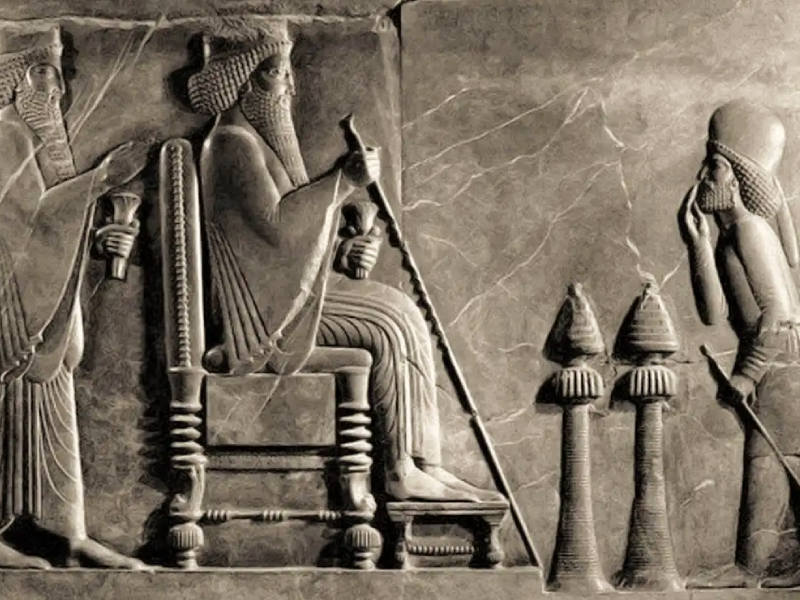
Darius the Great
Another famous character of the Achaemenid Dynasty, Darius the Great, was the greatest king of the Achaemenid Empire. He also expanded the territory of his kingdom and established a system of dividing the map into satrapies.
Xerxes I
Xerxes, Darius’ son, succeeded him as ruler of the Achaemenid Empire. He is well-known for his grandiose military endeavors, including the invasion of Greece, which ended in defeat at the Battle of Plataea.
Artaxerxes I
Artaxerxes Longimanus was the son of Xerxes I, and he faced several struggles during his reign. Although he wasn’t as successful as his father, he tried his best to maintain control over the empire.
Darius II
Known as Darius Nothus, he was the son of Artaxerxes I. He experienced a lot of internal conflicts during his leadership, including the conflicts with Cyrus the Younger.
Artaxerxes II
Artaxerxes II, who was also known as Artaxerxes Mnemon, was the oldest son of Darius II. During his reign, he faced numerous problems, such as an invasion by the Greeks, who were under the control of Alexander the Great.
Cyrus the Great Empire
Cyrus the Great founded the Persian Empire after he overthrew the Median Dynasty. The Persian Achaemenid Empire is sometimes called the Cyrusian Empire. Cyrus the Great was an excellent conqueror and statesman of all time; because of his great military achievements, he became famous all over the world.
Moreover, Cyrus the Great defeated neighboring lands through his persistent attacks and became more powerful. He has embraced the concept of religious and cultural freedom. Cyrus the Great’s administration was characterized by an efficient and centralized way of control.
There were satrapies, also called provinces in today’s world, which were usually commanded by a satrap and appointed by the central authority. In the end, Cyrus the Great died in a battle, and his empire continued to be ruled by other kings.
Achaemenid Empire Map
The Achaemenid Empire map is an interesting topic to explore. The Achaemenid Empire map was very diverse and vast, which showcases the power of this empire. An interesting fact is that the territory of the Achaemenid Empire stretched across Europe, Asia, and even parts of Africa as it was taking over the whole universe. Nevertheless, the heartland of the empire was the famous Persia, and was the ancestral homeland of the Achaemenid dynasty.
If we are going to start the Achaemenid map, we will start with the Media, which was conquered by Cyrus the Great and became a part of the Achaemenid Empire territory. The media covered parts of modern-day northwestern Iran and northeastern Iraq. Furthermore, the Achaemenids also conquered the lands of the former Assyria, and they are known as modern-day Iraq, Syria, and Turkey.
Under the reign of Cambyses II, the Achaemenids conquered Egypt. In the following, the Achaemenid Empire continued to expand the kingdom by conquering the famous Anatolia. This one was an important region due to its strategic location. Other nations are also included, such as the coastal region of Phoenicia, located in modern-day Lebanon and parts of Syria, the region of Palestine, including present-day Israel, the Palestinian territories, and the island of Cyprus in the eastern Mediterranean Sea.
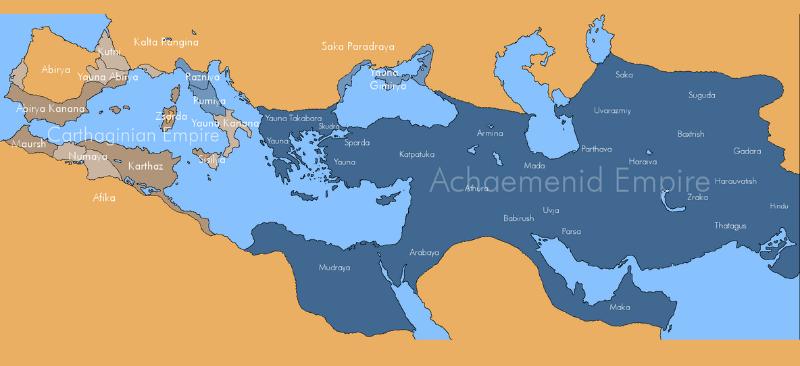
Another interesting fact is that the Achaemenid Empire Map also expanded into parts of Central Asia and the Caucasus, such as modern-day Afghanistan, Pakistan, Tajikistan, and Uzbekistan.
Achaemenid Empire vs the Roman Empire
The Achaemenid Empire was one of the earliest and most expansive empires in history, stretching from the Indus Valley in the east to the Balkans in the west. Its governance model emphasized tolerance and decentralization, allowing local rulers and customs to flourish under Persian oversight. The empire’s road systems, including the Royal Road, and the use of satraps (provincial governors), enabled efficient administration across vast territories. Culturally and politically, the Achaemenids laid the groundwork for later imperial systems, valuing a degree of cultural autonomy and structured bureaucracy.
In contrast, the Roman Empire, emerging centuries later, placed greater emphasis on centralized authority and direct rule. While the Romans also absorbed diverse peoples, they promoted Roman law, language, and urban planning in conquered regions to a greater extent. The Roman military was a professional, standing force that played a pivotal role in both expansion and control.
Rome’s political evolution, from Republic to Empire, also reflected its emphasis on civic participation and legal codification, distinguishing it from the more monarchic and hereditary nature of Achaemenid rule. Both empires, though different in structure and philosophy, left enduring legacies in governance, infrastructure, and culture.
Achaemenid Empire Population
The population of the Achaemenid Empire was remarkably diverse, encompassing an estimated 17 to 35 million people at its height, making it one of the most populous empires of the ancient world. This population was spread across regions that are today part of Iran, Iraq, Egypt, Turkey, Pakistan, and Central Asia. The Achaemenids governed a mosaic of ethnic groups, including Persians, Medes, Babylonians, Egyptians, Greeks, and Indians, each with distinct customs and languages. This diversity was managed through a system that allowed for cultural and administrative autonomy under the oversight of the central imperial authority.
Census data, while scarce and imprecise by modern standards, suggests that large urban centers like Babylon, Susa, and Persepolis were key population hubs, bustling with activity and trade. The empire’s population was supported by advanced agricultural systems, canal networks, and state-sponsored construction projects that employed thousands. The ability of the Achaemenids to integrate and manage such a vast and varied population contributed to the stability and longevity of their empire, despite challenges from both internal revolts and external invasions.
Achaemenid Empire Flag
The majesty of the Persian Achaemenid Empire shone like a beacon across continents, and exploring the symbols and the Achaemenid Empire Flag will light us even more. Interestingly, the Achaemenid Empire didn’t have a unique and standard flag. However, there were some symbols that represented the Achaemenid Empire.
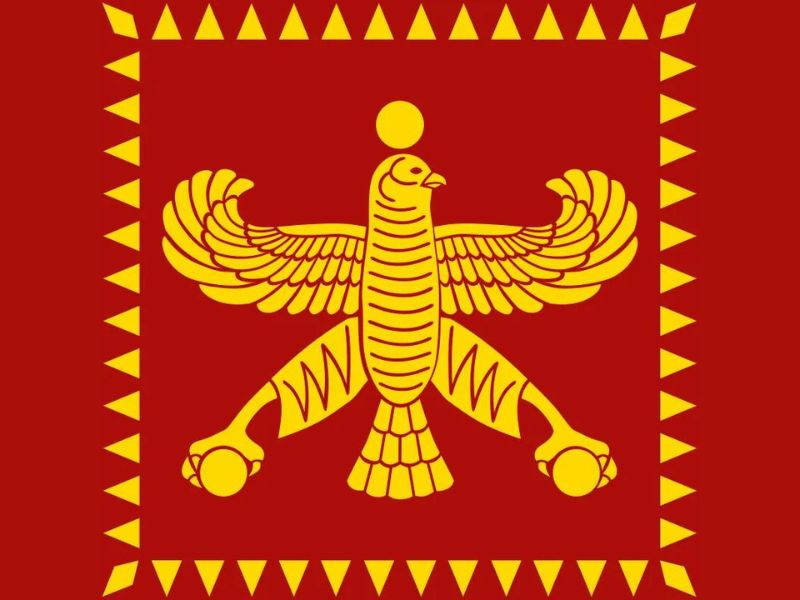
One of these symbols was Faravahar, which is also the famous one. It is deeply connected with ancient Persia. This symbol is created of a winged disc, with a human figure, which is emerging from it. This specific human figure is usually shown with outstretched arms, symbolizing the concept of good thoughts, good words, and good deeds.
More importantly, the Faravahar is not exclusively for the Achaemenid Empire because it is related to Zoroastrianism. The Winged Lion was another symbol that appeared in Achaemenid art and architecture, particularly in the form of decorative reliefs. This symbol represents power and strength, which was a unique characteristic of the Achaemenid Empire.
Royal Insignia was an exclusive symbol of the Achaemenid kings, and normally, it was a representation of the king, sometimes seated on a throne, holding a scepter or a bow. Royal Insignias were often displayed on the royal seals and formal documents.
Darius the Great
Darius the Great was another famous character of the Achaemenids. He was known as the most influential king. He was famous for his popular nickname, Darius the Great; he expanded the empire of the Achaemenids. The administrative reforms, great infrastructure projects, and military campaigns were also a crucial part of his leadership.
During his reign, several administrative improvements were made. To exemplify, he split the empire into parts and provinces and called it satrapies. This new system allowed for efficient administration and tax collection. Creating a standardized system of laws in the name of “Law of the Persians and the Medes” was also another thing that Darius did to bring justice to his empire.
Darius also wanted to construct several major projects, including the Royal Road and the City of Persepolis. Persepolis was going to be the ceremonial capital of the Achaemenid Empire. Hence, leaving a lasting legacy in Iran, Darius’s reign was a golden age in Achaemenid history book.
Achaemenid Dynasty
The Achaemenid Dynasty is on the list of the greatest empires of the world. They were the first Persian Empire to be considered the most extensive ancient empire. The empire’s territorial diversity was unparalleled at that time. The policy of cultural and religious freedom during the Achaemenid Dynasty was also a notable feature that resulted in the cooperation and stability of their empire.
The Achaemenid Empire rulers had a respect for different traditions, other languages, and diverse cultures. The Achaemenid Empire’s legacy continued to shape subsequent empires and different civilizations. Parthians and Sassanids were only two of the empires that role-modeled the system of the Achaemenid dynasty. Besides, their great impact on the culture and art of the Persian region shouldn’t be forgotten.
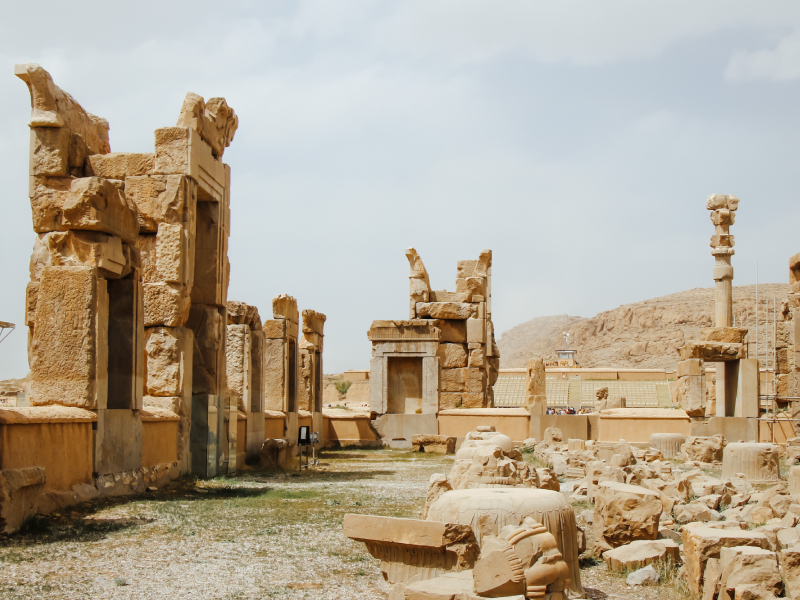
They have contributed to the Persian culture, and their legacy exists today. Moreover, their notable rulers and leaders left an indelible mark on history. Cyrus the Great and Darius the Great were two of the statesmen and famous rulers of the Persian Empire.
Achaemenid Meaning
Achaemenid’s Meaning comes from the ancient Persian term. The term “Achaemenid” is about the dynasty of Ancient Persia that was established by the Achaemenid Empire and its founder, Cyrus the Great. Furthermore, the name is actually derived from the founder of the dynasty, Achaemenes, who was the patriarch of the Achaemenid family, and the word “Achaemenid” is an old Persian term that means “of the family of Achaemenes” (Hakhamanishiya).
This word was used to describe the ruling family of “Hakhamanishiya” and became associated with the empire that they established. Additionally, the Achaemenid Empire is also sometimes called the Persian Empire since it was ruled by the Achaemenid dynasty.
The term “Persia” was also the name that was commonly used by the ancient Greeks to refer to the region of Ancient Persia or modern-day Iran. Achaemenid Pronunciation is like this: Uh-kee-muh-nid.
Achaemenid Religion & Culture
The main religion of the Achaemenid dynasty was Zoroastrianism, which was founded by the prophet Zoroaster, who worshiped Ahura Mazda (the supreme god). The core ideas of his religion were truth, wisdom, and goodness. The Achaemenid emperors had a lot of focus on these concepts.
It is also interesting to know that, although Zoroastrianism was the state religion, the rulers had a lot of religious tolerance, and the freedom of different ideas and opinions existed. Indeed, one of the main reasons for the stability of the Achaemenid dynasty was religious freedom.
Besides religion, culture also has an important role in shaping the lives of people. The culture of the Achaemenids has influenced many nations and was their main feature.
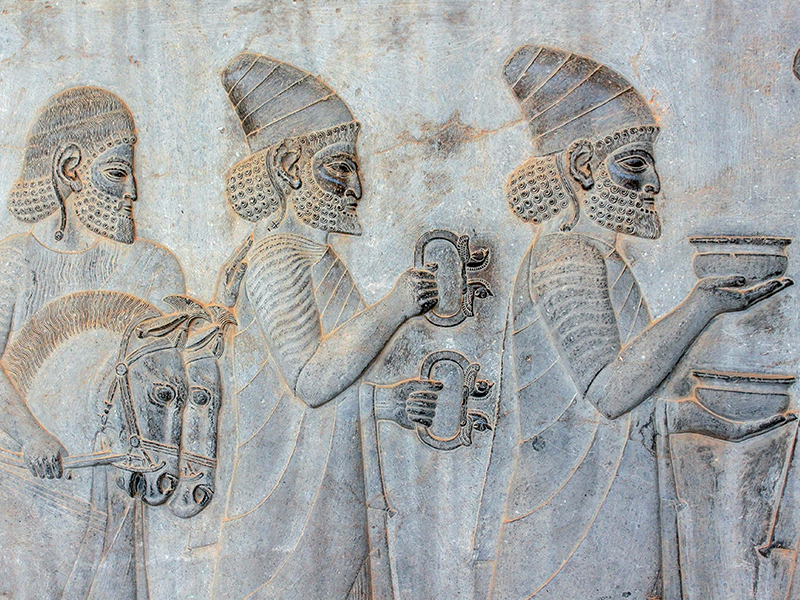
The Achaemenid art and architecture were characterized by attention to detail and sophistication. We can see the examples by only taking a simple look at the magnificent palaces and monumental buildings that are left from that era, such as Persepolis.
The art of the Achaemenids in that era would take place around the king, court rituals, and scenes of battles. Old Persian was their official language and writing system, which was written in the cuneiform script. Inscriptions in Old Persian were found on royal tombs, palaces, and administrative documents of that era.
The Achaemenid empire also had multilingual characters, which were used in different regions for official purposes, such as Aramaic and Elamite.
The court and royal customs in the Achaemenid dynasty consisted of elaborate protocols and rituals. The king was the core power of the court, and he was surrounded by a group of officials. Royal banquets, gift exchanges, and diplomatic ceremonies were also important aspects.
The Achaemenids would also focus on education and schooling. They established numerous libraries, and the translation of books and works from other cultures was also encouraged. Preserving and disseminating knowledge and wisdom was important for their system.
The Persian Immortals
Truly, the Achaemenid Empire was the largest of its time. This empire covered approximately 5.5 million square kilometers (2.1 million square miles) and had a great army all over the region. One of the elite fighting forces of the Achaemenids was the “Persian Immortals,” who were the personal bodyguard unit of the kings.
Discipline and bravery were only two of their features. Their name “Immortals” means that their numbers would always remain constant. In other words, with every fallen soldier, another immediately gets replaced to maintain a force of 10,000 troops.
Final Scene for the Achaemenid Empire
The Achaemenid Empire, which was one of the largest empires in the world, eventually declined and was conquered by Alexander the Great from the Macedonians. The invasion of Alexander the Great marked the end of the Achaemenid Dynasty and started a new era in the history of Iran.
Nevertheless, the Achaemenid empire had a lasting impact on the history of the region. Their legacy and influence can be seen and read in today’s books, and we can explore their dynasty and history and learn more.
What Has Remain Today?
The Achaemenid Empire left a lasting legacy in the history books. There are lots of attractions and artifacts that have remained from that era. For instance, the ruins of Persepolis, located near the modern city of Shiraz, are one of the most significant surviving remnants of the Achaemenid Empire.
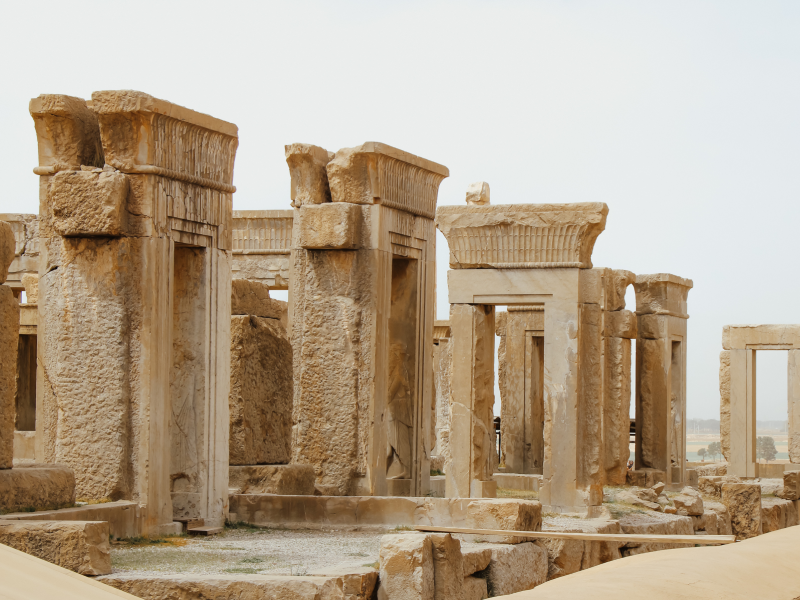
If we take a precise look at Persepolis, we can see that it includes grand palaces, audience halls, and reliefs.
Today, Persepolis is a UNESCO World Heritage site and is an important site. Another attraction located within the Persepolis complex is the Apadana Palace. The great Apadana Palace was the main audience hall of the Achaemenid kings and leaders. Although it was destroyed by Alexander the Great, some of its stones can still be seen today as a legacy. Moreover, Pasargad is another attraction that is considered a reminiscence of the Achaemenid Empire.
This site was the first capital of the Achaemenid Empire and the burial place of Cyrus the Great. The site contains the ruins of Cyrus’s Tomb, and it is truly an interesting structure built on a high platform. Behistun Inscription, carved into a cliff in the western part of Iran, is a multilingual inscription commissioned by Darius the Great.
If we have a closer look, important historical information about the Achaemenid kings and their conquests can be found on this object. In addition to Behistun, cylinder seals were also a part of the Achaemenids’ culture. They are small, cylindrical objects engraved with intricate designs and used as personal seals.
Achaemenid Coins are believed to be another discovery that is held in museums. These coins are typically made of gold or silver and feature various designs. Some other Achaemenid artifacts are also held in museums around the world. These include sculptures, reliefs, pottery, jewelry, and other objects that offer glimpses into Achaemenid culture and daily life.
Final Words
Persian Empires have left a lasting impact on the history of Iran. The Achaemenid Empire, the well-known and powerful Persian Empire, was one of the most significant empires of Iran. The Achaemenid Empire was the largest empire of Iran and was very diverse. During the Persian Achaemenid Empire, Iran experienced a lot of changes in terms of culture, religion, and moral principles. Today, the remains of the Persian Achaemenid Empire can be seen in the Iranian culture and ethical lives.
Are you planning to travel to Iran and looking for an Iran resort? Consider Matinabad Eco-resort.

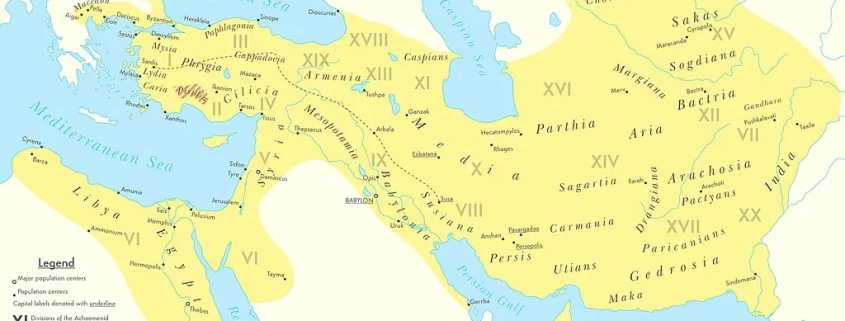



Leave a Reply
Want to join the discussion?Feel free to contribute!